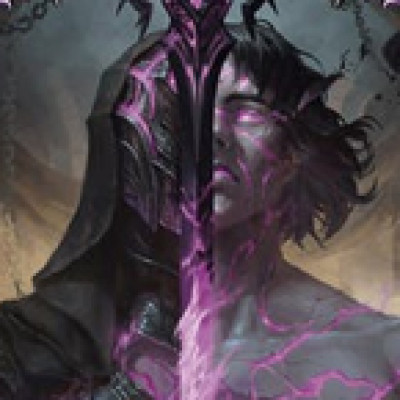It's hard to believe the World Championship was already two months ago, but 2023 is upon us, and with it comes Pro Quest Season 3. The season runs from January 14th through January 29th and feeds Pro Tour #3, set to be held in the United States in April or May (you can read more about FaB Organized Play in 2023 here).
With the player base continuing to expand and the last PT qualifying season ending over six months ago, many setting out to join the Pro Tour may not have experienced an event like this before. So let me set you on the right path.
Pro Quest Preparations
Setting Goals
Before determining how to approach the Pro Quest season, the first thing you need to ask yourself is what you want to get out of it. Are you looking for a chance to play games against some tougher competition, or are you chasing a Gold Foil and an invitation to the Pro Tour? There is no wrong answer here, and there are plenty of excellent goals between "fun" and "Pro Tour", but it's important to be honest with yourself to not set yourself up for disappointment. As a player whose ultimate goal is to win the invite to the Pro Tour, I also make sure to remind myself of my primary, non-result dependent goal: "Don't beat yourself!"
Logistics
Once you know your goal, it’s time to make your plans. If you're determined to try and qualify for Pro Tour, it certainly helps your chances to play in multiple Pro Quests. But not everyone is lucky enough to have a bunch of events nearby, which means some amount of travel might be necessary. Carpooling is clutch in these situations, both to help keep costs down and because going to events with friends is even more fun!
Along those lines, set your schedule for the outcome you want. If your goal is to make Pro Tour, the last barrier shouldn't be asking off work or talking to your spouse! Take time off for every event at the onset, and have plans in place for travel and accommodations. It's easier to cancel at the last minute than clear your schedule!
With your travel plans squared away, next it's time to make sure your deck is ready. If you've been using the same sleeves for a while, you'll want to make sure you re-sleeve your deck beforehand to avoid the risk of marked cards (make sure your deck is shuffled and not ordered when you do this). Ideally, you'll want to have your deck and decklist ready ahead of time so you're not scrambling to complete it at the last second. That's not to say you can't win if you have to find a third copy of Sink Below right before the event, but everything you have prepared ahead of time is one less thing to worry about on gameday.
Deck Selection and Practice
When it comes to choosing a deck for Pro Quest season, there are a number of factors to consider. While some players will gravitate towards the best decks in any given format, others will stick with their favorite heroes or classes. If you're someone trying to play the best deck, it's vital to make sure you get plenty of practice reps in with it to get used to the play patterns and get a feel for how key matchups play out. If you're sticking with a deck that isn't one of those top decks, make sure you come prepared with a solid gameplan for the matchups you're most likely to face.
It's easy to justify playing a mainstream, proven deck, but Alex Truell makes a case for sticking to what you know, even if it's outside the meta, in this article.
While some players are able to dedicate substantial quantities of time to consistent testing, the reality for many players is that practice time is limited. Because it is limited, it's important to make sure you're using your available practice time wisely. Generally speaking, you'll want to spend the most time playing games against the decks you expect to face most frequently in real events.
The Expected Meta
While the meta at individual Pro Quests can be quite varied depending on locale and event size, with a large enough sample size, the greater meta game will reveal itself. While the tiers mentioned below are certainly not set in stone, they do represent what I think will be the most commonly represented heroes at the top tables and in Pro Quest Top 8's.
Tier 1
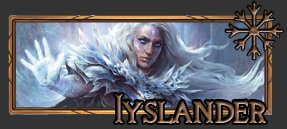
Until proven otherwise, Iyslander remains the deck to beat in the format. With her powerful suite of Ice disruption and Aether Iceveins to stymie aggro opponents; late game inevitability via the Frost Hex + Ice Eternal combo; and a strong, value-oriented gameplan featuring attacks like Enlightened Strike, Wounded Bull, and Scar for a Scar, the Ice Queen is strong in all phases of the game.
You can read more about the deck-to-beat from the World Champion creator and pilot of this deck, Michael Hamilton, in our Pro Series article here.
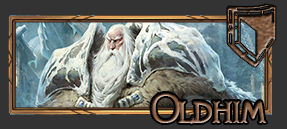
The existence of the Frost Hex combo caused an interesting arms race in the battle between Oldhim and Iyslander, as the combo meant that Oldhim would almost invariably lose if the game went long enough. This led to Oldhim running more Pummels and aggressive attacks to put the pressure on early and not allow Iyslander the time to setup a lethal Ice Eternal. As the old guard of the top tables, he remains a threat- especially if players find that edge to gain an advantage into Iyslander.
It's been a while since we've featured Oldhim in an article, but back in 2021 Drew Cordell did a 4-part series refining Oldhim from his debut. The lessons learned along the way still apply - though we'll have to get a new piece on the Elemental Guardian soon!
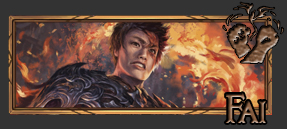
Fai remains the premiere aggro deck of the CC format, setting the standard for what every other deck needs to be able to contend with. The consistency with which Fai is able to present 12+ damage is incredible, and that's just the baseline average turn. Art of War, Spreading Flames, and both Ninja masks take already solid turns and push them over the top. Making use of the Belittle package helps Fai fight back against the Icy disruption of Iyslander and Oldhim.
To understand the nuance of Fai's value game, stop by Will Reinhardt's thorough numerical examination of the Draconic Ninja in our Pro Series article here.
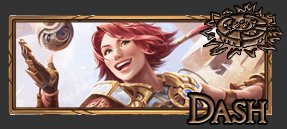
The Dynasty additions of Bios Update and Pulsewave Harpoon have given Dash a fresh surge of power, and her ability to pivot between Boost Aggro and Pistol Control makes her the most obvious choice for "breakout top tier member". Dash is able to put on enough pressure to hang with Fai's damage output, while retaining easy access to Arcane Barrier 3 in the fight against Iyslander (though Hypothermia and Channel Lake Frigid still make keep this matchup challenging). The aggressive boost gameplan would normally be easily fatigued by Oldhim - which is why we sideboard into the defense reactions and Plasma Purifiers and build towards Dash's inevitable endgame.
Though Dynasty has added many new cards to the list, at its core a Hybrid approach remains Dash's biggest advantage into a diverse meta. Tim Bierholz went into detail for the Rathe Times in an article last August.
Tier 2
While the decks in this tier are all quite powerful, they each suffer at least one poor matchup against the top tier decks, making a flawless journey to the top more difficult.
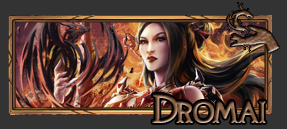
While Dromai attacks on a unique axis that can cause problems for both Iyslander and Oldhim; and while the Dash matchup is quite close; the Fai and Runeblade matchups remain problematic. If someone can solve the Fai problem without compromising the Iyslander and Oldhim matchups, Dromai will be a force to be reckoned with in Pro Quest season.
Our most recent Dromai decklist comes to us from Parker Brown, and takes an aggressive posture that lets you drive the tempo.
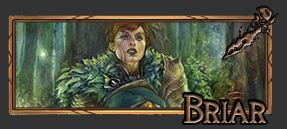
Still seeking that Living Legend status, Briar has the highest ceiling of potential damage output thanks to Channel Mount Heroic. Unfortunately, Briar tends to struggle against Iyslander, and in games where they don't see CMH early enough (or at all), they can struggle to keep up with Fai's damage output. Briar is a deck that can spike any tournament if it's running hot, but Briar's consistency is not on the same level as the top tier heroes.
I offered my early thoughts on how Dynasty might impact the Runeblades in a Pro Series piece last November. Use this as a springboard as you develop a tournament-winning Briar.
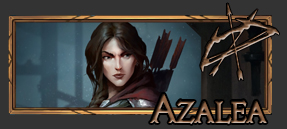
Azalea was already favored into Fai before Dynasty; with the additions of Heat Seeker, Immobilizing Shot, Dead Eye, and Drill Shot, it may finally be her time. While Iyslander and Oldhim are winnable, they're not overly favorable, and the Dromai matchup is the most challenging matchup for the OG Ranger. The power is here, but once again consistency might be an area of concern, as so many Ranger games are lost on the back of the infamous no-arrow hand.
Alex Truell will die on the Sandscour hill- but it'll probably be the more conventional Death Dealer that will perform best on the Pro Quest stage.
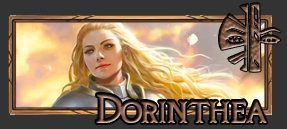
Axes Dori boasts a solid matchup into Fai and other aggro heroes - largely on the back of Valiant Dynamo - but finds itself with a poor Iyslander matchup. The two decks are playing the same numbers game, except Dorinthea is doing so without the disruptive elements, which gives Iyslander a major edge. Dawnblade Dori likely has a stronger matchup into Iyslander, but the time necessary for the damage output of Dawnblade to scale up is a bit too slow on average to race Fai. Perhaps a hybrid build could thread the needle, switching weapons based on the matchup; but the decklist that can consistently weather an entire tournament has yet to be found.
Will Reinhardt's Pro Series piece on Dorinthea examines the delicate math behind a reaction-heavy hero, and how the struggle to get full value remains the defining challenge of the deck.
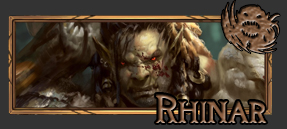
The original Brute got a few new cards in Dynasty and has solid game into Iyslander, Oldhim, and Dash, but once again finds itself struggling immensely against Fai. Rhinar can't keep up with Fai's damage output without drawing multiple Bloodrush Bellows early, and defensively he's ill-equipped to slow him down without any real disruptive tools. Solve the Fai matchup, and you have an intimidating deck.
Perhaps the most qualified player to speak about Rhinar is the Malaysian National Champion, Nitya Kalaichelvan. She wrote up her guidance on the Rhinar deck that got her there for a Pro Series piece in September.
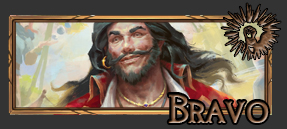
Old reliable, Bravo can play the same aggressive game plan as Oldhim, with a slew of disruptive on-hit effects that can cause problems for Fai and enough copies of Pummel to quickly threaten Iyslander's life. The general sentiment I've seen is that Bravo is just trying to do the same thing as Oldhim without the Ice cards, and I can't say I disagree with them - but no matter how much anyone thinks that, dominated Crippling Crushes will always win games, and the Showstopper has many loyal followers.
Mark Siew thinks that Bravo's been pigeonholed for too long, and sees a more flexible, adaptive decklist as the best bet moving forward.
Let the Quest Begin!
While these heroes are the ones I think you're most likely to encounter at Pro Quests this season, any hero can take down an event in the right hands. Winning requires a confluence of good play and good luck, and having the GEM gods on your side doesn't hurt either!
Have your own advice or pre-tournament rituals to suggest? Agree or disagree with my assessment of the expected meta? I'd love to hear from you!


